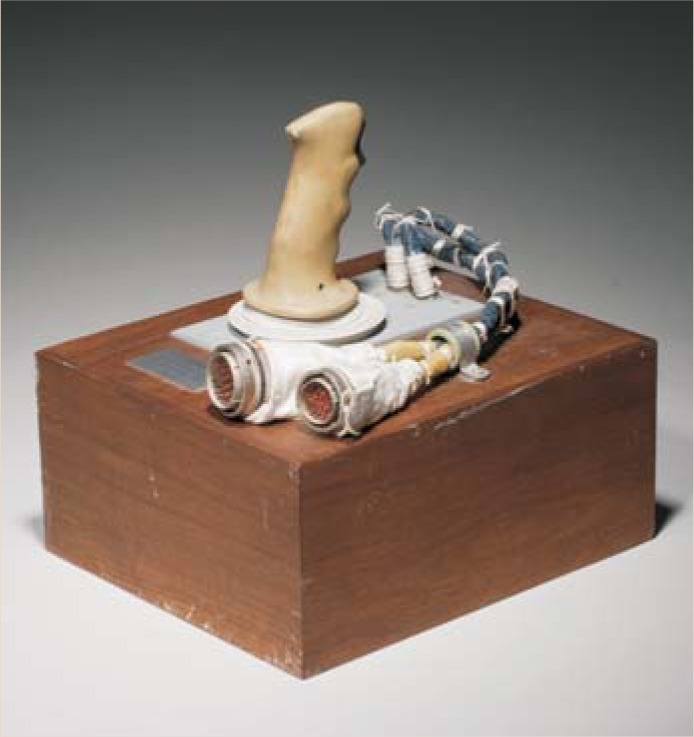Lunar spaceflight history on the block
DOI: 10.1063/1.3177220
On 16 July, 40 years to the week after the first manned Moon landing on 20 July 1969, lunar spaceflight memorabilia are being offered at auction in New York City by Bonhams New York. The auction includes artifacts from all the Apollo manned missions.
Among the roughly 400 items on offer will be a lunar dust brush, scale models of spacecraft by engineer Maxime Faget, checklists, and “insurance” postal covers. A letter (also in the sale) from Buzz Aldrin explains that he and the two other Apollo 11 astronauts signed the postal covers, which were postmarked the day of launch; the idea was for their families to sell them if the mission ended in disaster.
One item that Bonhams expects to fetch as much as $300 000 is a flight vehicle attitude hand controller assembly (see photo) from the Apollo 15 lunar module. Lunar modules were not designed to return to Earth, so the controller assembly is rare.
A star chart on the block, says Gregg Linebaugh, a consultant who was instrumental in putting together the auction, was used by the Apollo 11 crew to figure out where on the Moon’s surface they had landed. “The star chart represents a tie from sailing vessels. Using something like that on the Moon’s surface is amazing,” Linebaugh says.
Most of the items came directly from astronauts or private collectors. Until the mid-1980s, Linebaugh says, the dispersal of artifacts “was a gray area. NASA retained the vast majority of the hardware, but at the paper level, the astronauts got to keep things. The shuttle crews are no longer allowed to keep much. They can keep their personal kits and some mementos.” This sale, he adds, “is probably the last big chance to see such a broad variety of extremely historical and important items from the early space program.”

BONHAMS

More about the Authors
Toni Feder. tfeder@aip.org
